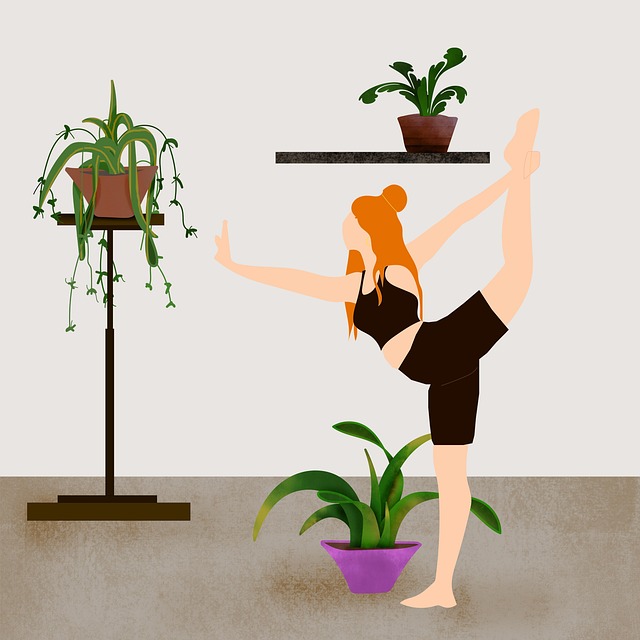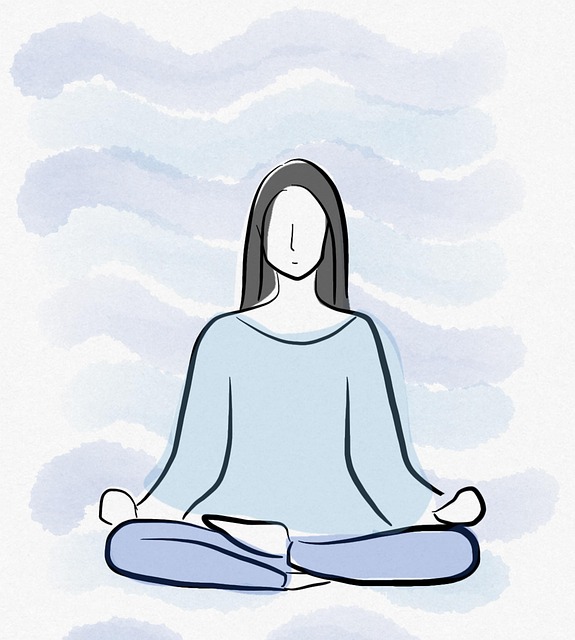Solo yoga routines offer a powerful combination of physical flexibility, mental clarity, and stress reduction through tailored poses, breathing techniques, and mindfulness exercises. Incorporating foundational postures like Tadasana (Mountain Pose) and targeted stretches for major muscle groups enhances flexibility while mindful breathing techniques quiet the mind and deepen relaxation. Establishing a consistent home practice with dedicated time, a yoga mat, and guided audio resources can unlock these holistic benefits, fostering peace and presence in daily life.
Unwind, stretch, and reconnect with yourself through solo yoga routines. This practice offers a powerful blend of flexibility training and relaxation techniques, accessible from the comfort of your home. In this guide, we’ll explore the benefits of solo yoga for both body and mind, equip you with essential poses for a well-rounded practice, and provide tips to incorporate mindfulness exercises for deeper calm. Get ready to embrace tranquility and enhance your flexibility on your own terms.
- Understanding Solo Yoga: Benefits for Flexibility and Relaxation
- Essential Poses for a Comprehensive Solo Practice
- Incorporating Mindfulness Exercises into Your Routine
- Tips for Creating a Consistent Solo Yoga Practice at Home
Understanding Solo Yoga: Benefits for Flexibility and Relaxation

Solo yoga routines offer a powerful approach to enhancing flexibility and achieving deep relaxation. This practice, often involving various postures and breathing techniques, allows individuals to connect deeply with their bodies in the absence of a teacher or class setting. By focusing solely on your own movement and breath, solo yoga cultivates mindfulness exercises that improve mental clarity and calmness.
The benefits are twofold: physical and mental. On a physical level, solo yoga helps stretch and strengthen muscles, increasing flexibility over time. It encourages deeper stretches because you have complete control over the pace and intensity. Moreover, mindfulness exercises integrated into these routines promote relaxation by reducing stress and anxiety, allowing for a profound sense of calm to settle in.
Essential Poses for a Comprehensive Solo Practice

In any solo yoga routine, it’s crucial to strike a balance between flexibility and stability through a well-rounded selection of poses. Begin with foundational poses like Mountain Pose (Tadasana) for grounding and posture alignment. This simple yet effective stance is a cornerstone for cultivating awareness and breath control, key elements in mindfulness exercises.
Transition into stretches that target major muscle groups such as the hamstrings (Seated Forward Bend), quadriceps (Lunge Pose), and shoulders (Child’s Pose). These essential poses not only enhance flexibility but also promote relaxation, allowing you to focus on your breath and immerse yourself in the present moment—core aspects of a rejuvenating solo yoga practice.
Incorporating Mindfulness Exercises into Your Routine

Incorporating mindfulness exercises into your solo yoga routine is a powerful way to enhance both flexibility and relaxation. Beyond physical postures, mindfulness focuses on the present moment, helping to quiet the mind and reduce stress. During practice, pay attention to your breath, noticing each inhalation and exhalation. This simple act of awareness can deepen your connection with your body, allowing you to hold poses longer without strain. By combining mindful breathing with yoga, you create a holistic experience that calms the nervous system and improves mental clarity.
Mindfulness exercises don’t have to be complex. Start with basic techniques like focusing on the sensations in your body or observing your thoughts without judgment. As you progress, explore guided meditations specifically designed for yogis. These practices can be integrated seamlessly into your routine, allowing you to cultivate a deeper sense of presence and peace during each session.
Tips for Creating a Consistent Solo Yoga Practice at Home

Establishing a regular solo yoga practice at home can be incredibly beneficial for both flexibility and relaxation, allowing you to create a sanctuary for self-care within your own space. Start by setting aside dedicated time each day or week for your practice. Consistency is key; even just 15-30 minutes daily can make a noticeable difference. Choose a quiet area in your home where you won’t be disturbed, and ensure the space is comfortable and inviting. Invest in a good yoga mat to provide traction and comfort during your routine.
To enhance your experience, incorporate mindfulness exercises throughout your practice. This could include focusing on your breath as you move, or setting an intention for each pose. By engaging your mind along with your body, you deepen the relaxation aspect of your practice, making it a truly holistic experience. Consider using guided audio recordings or apps to help guide you through the poses and keep you present in the moment.
Solo yoga routines offer a powerful way to enhance flexibility and promote deep relaxation. By incorporating essential poses and mindfulness exercises, you can create a comprehensive practice tailored to your home environment. With consistent effort, these routines not only improve physical flexibility but also calm the mind, making them an accessible and effective tool for overall well-being.
